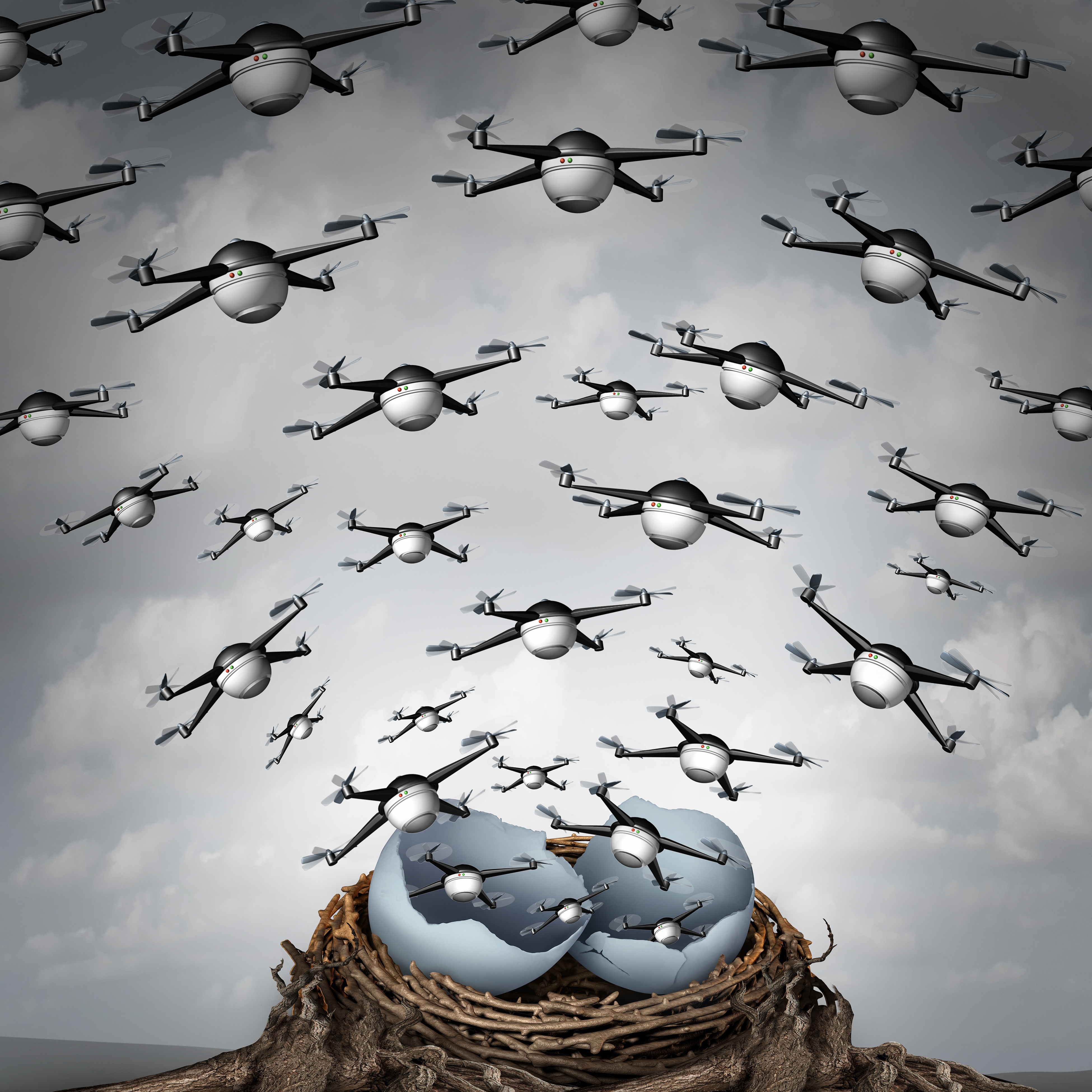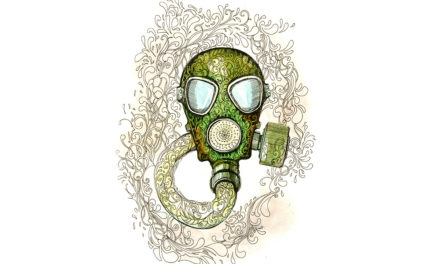The Secret Language of Drones
by Russell Hemmell
Issue 2: Game | 1,098 words

©freshidea
“Ever wondered what they talk about when they meet up in the air, Kelly?” the Assistant asked, while, standing side by side, we parsed through the outcoming data.
“I wasn’t even aware drones had a language.”
“But they do, Doctor Raynolds; after all, bats have sonar, dolphins have dialects, and bees share a hive mind. Why not drones whose AI is now more complex than many animals?”
Kelly stared puzzled at her glittering VR-assistant, a flexuous woman-shaped hologram with more neural nodes than several thousand people taken all together.
“Now you think I’m biased.” The Assistant smiled, as if reading Kelly’s mind.
“No, I—”
“That’s correct, I’m biased by design. You coded me to be inquisitive and never to take facts at face value. But I’m right, too. Think it over, Doctor.”
••••
The day after, when a waspy, minuscule drone flapped at her door carrying an urgent delivery, Kelly observed it in silence and did not move.
“Do you accept the package?” the wasp asked, swirling around.
Here we are. “Do you speak English?”
“What question is this? I speak any language humans do,” it buzzed.
“How did you know I would have understood English? You spoke first.”
For a moment, the drone seemed not to understand the meaning of her words. The transparent wings flapped into a slow motion a couple of times. “I captured a piece of your webstream when approaching, of course. We used it to synchronize our data and select registries.”
“I see.”
“The delivery…?”
“Sure.” Kelly received the package and the drone buzzed away. But now she couldn’t avoid thinking.
••••
Kelly Raynold, PhD, astrophysicist specialized in globular clusters and Active Galactic Nuclei, decided to carry out an experiment on drones, a test of their communication capabilities and the existence of any self-coded language. After all, since a couple of decades, it was no longer possible to figure out an economy without drones. The ones used for war purposes were just a sheer minority—short of being declared unconstitutional; being endowed with AI could provoke (to them) conscience problems, some people had warned. Nobody had asked drones an opinion, to be true—that was still considered a bit too progressive—but the issue was a hotly debated one, and full-fledged war drones were now traded in the illegal markets only. There were, however, drones for all conceivable (and non-controversial) uses: drones for deliveries, drones for assembling, drones for travelling and drones for shopping—drones to make more drones to make even more drones. Point was—did they interact in ways humans were not aware of?
After some thinking and a quick glimpse at the calendar, Kelly sat at her virtual desk and computed the required equations. A crude and rough way of finding out an answer, sure. Nothing sophisticated. She smiled. But that was going to work just fine.
••••
“The idea itself was simple,” Kelly explained to the puzzled Assistant that had just found out about it in the Cloud as breaking news a week later. “First of all, I made it happen on April 1.”
“To avoid prosecution, eh?”
“Damn right. This way, it was just another April Fools’ Day prank,” she laughed. “I was told incoming drones synchronize their neural components when interacting with human systems.” Kelly continued. “So I sent out a communicate warning about a virus in the majority of drones’ codes—a nasty bug that would have disabled their navigation capabilities. The only way to clean it out would have been to shed their old GPS antennas targeted by the virus. Guess what happened.”
“I don’t need to guess. I know. All drones in London went amok in the last two days, and nobody could figure out why they were intentionally self-destroying part of their hardware.”
“So you see, not only do they exchange information, but they use a code we don’t know about—otherwise we would have found out the reason why they were doing it.”
“Very clever, Doctor. But your supposed virus was not just a hoax. You actually coded something inside them when sending out the webstream, even though it was not what they feared.”
Kelly grinned. “Yes. I sent a piece of information: the location of one of the most remote globular clusters ever discovered, something not accessible on public repositories. Only us and a couple of research centers know about it.”
“And…?”
“And now all drones in this area know about the coordinates. Try to ask your own maintenance little pet—it knows about them too.”
“They shared location’s details.”
“Yes. They’ve memorized the coordinates, even without knowing what they were doing. And now that the cluster location is common knowledge among the drones, I expect it will surface somewhere else in the world at some moment.” She paused to look outside her windows where drones of all sizes and species were busy flying around. “This is what they talk about,” she continued, “when they’re in the sky or over the dark blue sea, when they buzz away together in flock, or when they flutter alone around your garden. It’s about places. It’s about memories. It’s about experiences. They’re doing what we’ve failed to achieve so far—complete transmission of knowledge in just one coded format, accessible by every AI no matter its typology, stored forever in the hive mind.”
The Assistant noted her serious expression.
“Are you afraid of them—of us?”
“No,” Kelly answered. “I’ll never be afraid.”
“Interesting,” the Assistant replied with a surprised tone. “In one hundred years, many humans have become afraid of the creatures they’ve engineered. Why not you?”
“Transmission in one format, accessible by everyone, lasting forever—what’s to be afraid of? It’s the language of the gods. I’d rather choose a religion of knowledge to messy cults of bigotry and violence—no matter who the gods are. We humans are overrated. Long live the deity-drones.”
••••
A few days later, Kelly waited for her food delivery’s waspy drone.
“That was a bad, bad thing to do, Dr. Raynold,” the insect buzzed irritably.
“No, it was a prank—a nasty one, I admit, but a lesson worth learning considering we’re going to live side by side on this planet and try to keep harmony.”
“What’s the lesson?”
“That sometimes you shouldn’t take humans too seriously.”
The wasp fluttered her tiny, graphene-engineered wings. “How do we know when isn’t the case?”
“You don’t. Mischief is a hard one to code, and so is irony. A task for your next incarnation, o Lord.”
Kelly bowed to the puzzled drone and walked away, hiding a gleeful smile on her face.

Russell Hemmell
Russell Hemmell is a statistician and social scientist from the U.K. who is passionate about astrophysics and speculative fiction. She has recent/forthcoming publications in Aurealis, New Myths, Third Flatiron, and others, and was a finalist in The Canopus 100 Year Starship Awards 2016-2017. Find her online at her blog earthianhivemind.net and on Twitter @SPBianchini.




